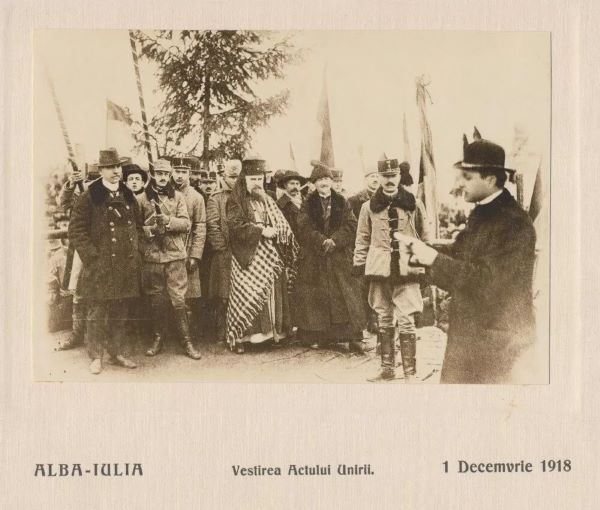Great Union Day, also known as Ziua Marii Uniri or Unification Day, is a national holiday in Romania, celebrated on December 1st each year. This momentous occasion commemorates the unification of Transylvania, Bessarabia, and Bukovina with the Romanian Kingdom in 1918, marking a pivotal point in the country's history.
This day is being celebrated through a Google Doodle which depicts the flag of Romania and it mentions: “Today’s annual Doodle celebrates Great Union Day, or Ziua Marii Uniri, in Romania! This holiday commemorates the unification of several different ethnic groups under one single banner. On this day in 1918, the National Assembly of Alba Iulia voted unanimously in favor of a greater union between Transylvania, Bessarabia, Bukovina, and the Kingdom of Romania.”

Source: Google Doodle
What Is the History of Great Union Day?

Source: Uncover Romania
The desire for unification among Romanians can be traced back to the early 19th century when the concept of Romanian nationalism began to take root. During this period, intellectuals and political leaders emerged, advocating for the union of various Romanian-inhabited territories under a single nation-state.
The Austro-Hungarian Empire, which controlled a significant portion of Romanian territories, became a major obstacle to unification aspirations. However, the winds of change began to blow in the early 20th century, as the empire faced internal challenges and the world witnessed the rise of national self-determination movements.
World War I played a pivotal role in setting the stage for Romanian unification. The conflict weakened the Austro-Hungarian Empire, and the momentum for independence grew stronger among the Romanian population. In 1918, as the empire began to crumble, Romanian leaders seized the opportunity to pursue their long-held dream.
On December 1st, 1918, a momentous gathering took place in Alba Iulia, Transylvania. Over 1,000 delegates from all Romanian-inhabited regions converged, forming the Great National Assembly of Alba Iulia. In a historic declaration, the assembly unanimously voted for the unification of Transylvania, Bessarabia, and Bukovina with the Kingdom of Romania.
The decision was met with widespread jubilation across Romanian territories. The unification marked the fulfilment of a centuries-old aspiration and the establishment of a modern Romanian nation-state.
What Is the Significance of Great Union Day?
Great Union Day has become a cornerstone of Romanian national identity, symbolising the unity, resilience, and determination of the Romanian people. It is a day to honour the sacrifices made by those who fought for the country's independence and unification.
The legacy of Great Union Day extends beyond Romania's borders, resonating with the Romanian diaspora worldwide. For Romanians living abroad, the holiday serves as a powerful reminder of their heritage and a connection to their homeland.
Great Union Day stands as a testament to the enduring power of national unity and the unwavering spirit of a people united by a shared history and a common destiny. It is a day to celebrate the past, honour the present, and build a brighter future for Romania.
Comments
All Comments (0)
Join the conversation